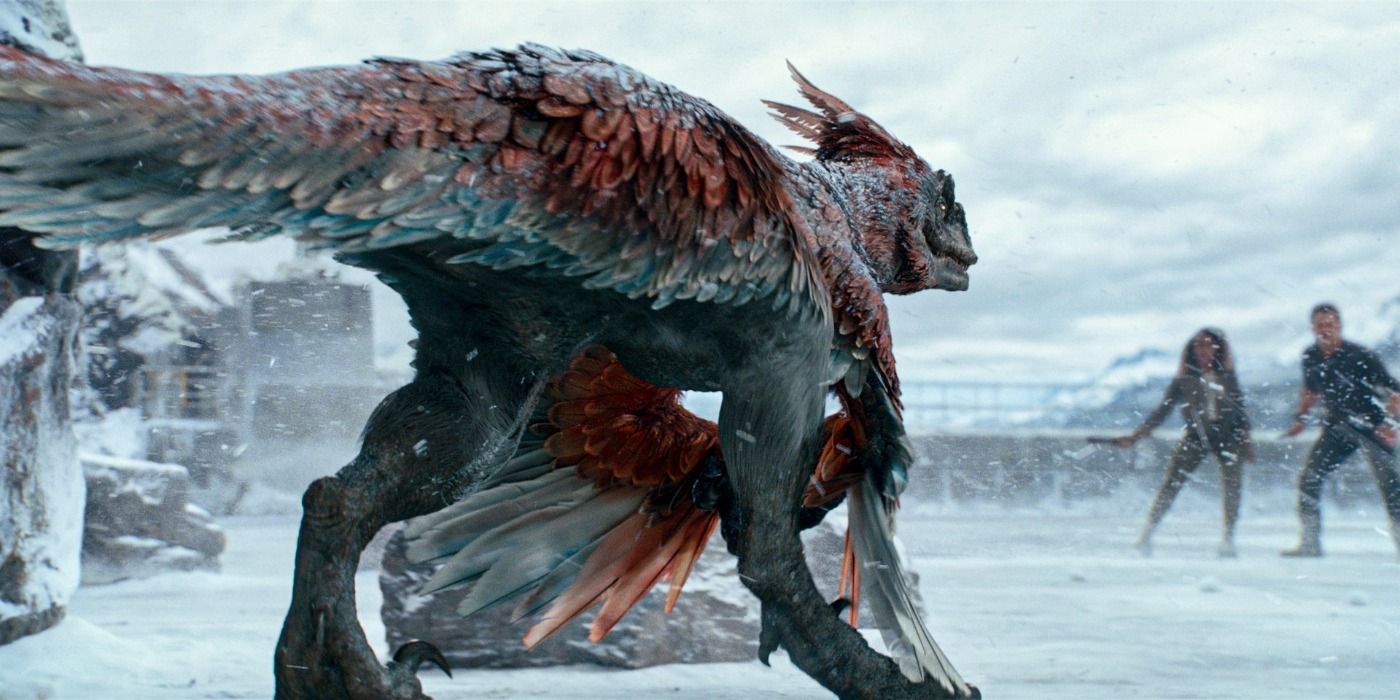Despite the welcome sight of Jurassic World Dominion's feathered dinosaurs, the concept seemed wasted, but Jurassic World 4 can fix it. As paleontologists’ understanding of dinosaurs evolved, the Jurassic World series attempted to reflect it, albeit with questionable results. However, a balance of entertainment and real-world science is achievable to reinforce the original Jurassic Park's messages while bringing the series’ dinosaurs to the next level of visual design.
SCREENRANT VIDEO OF THE DAY
Steven Spielberg’s Jurassic Park popularized the idea that birds evolved from dinosaurs through the character Alan Grant. He notes how much more birds have in common with dinosaurs than reptiles do, pointing out behaviors and anatomy associated with their modern relatives. This was an idea expanded upon in The Lost World: Jurassic Park by exploring dinosaur parental care through the character of Sarah Harding. Although Jurassic Park set up feathered dinosaurs, the first wouldn’t appear until Jurassic Park III, and then they didn’t return until Jurassic World Dominion.
“That doesn't look very scary, more like a six-foot turkey,” is a line made famous in the original Jurassic Park movie and a popular opinion when discussing the idea of feathered dinosaurs within the series. Jurassic World Dominion attempted to represent more accurate dinosaurs, with a feathered T. rex and Pyroraptor, but not in a way that felt visually interesting or significant. This proved to be a wasted opportunity to return to the original film’s messages. However, the next Jurassic World movie can finally give the series the dinosaurs it needs, inspired by nature, true to the first films, and just as entertaining as ever.
Feathered Dinosaurs Could Be So Much More Than Jurassic World Dominion Delivered

Jurassic World’s Indominus Rex made it clear what kind of movies these are and how they portray its dinosaurs, making the tongue-in-cheek line directed at its audience of “you didn't ask for reality, you asked for more teeth.” Yet the demand for feathered dinosaurs is there; otherwise, they wouldn’t have been reintroduced in Jurassic World Dominion, and fans such as artist David Romero wouldn’t have gone the extra mile to re-imagine the series’ iconic dinosaurs. As evidenced by Romero’s works, a Jurassic World Dominion sequel can address its feather problem by drawing inspiration from modern birds like the bearded vulture, the stygian owl, and the cassowary.
Modern birds as beautiful as they are terrifying, and it’s something Jurassic World as a series is missing since their feathered dinosaurs don’t invoke much terror or add more to their identity to give them any real distinction. A sequel can continue the abandonment of Jurassic World’s dinosaur hybrid obsession and be more accurate, allowing the movie to have its cake and eat it with plenty of teeth. After all, it wouldn’t be beyond the InGen technology to create a 30-foot vulture or a swarm of toothed owl-eyed dinosaurs.
Jurassic World Dominion missed why it was important to feature feathered dinosaurs: remind the audience that dinosaurs weren’t monsters, they were animals, and that they’re still around today. Jurassic World Dominion was able to call back to the original Jurassic Park films through characters like Alan Grant, but not its ideas about dinosaurs and their relationship to modern birds. Feathered dinosaurs in a fourth Jurassic World can help reinforce one of the most important messages, that not all the dinosaurs went extinct, while also potentially bringing back underrated characters like Sarah Harding. There’s something beautiful in the final realization that life found a way and that humankind never needed to bring dinosaurs back — just to appreciate how far they’ve come.
